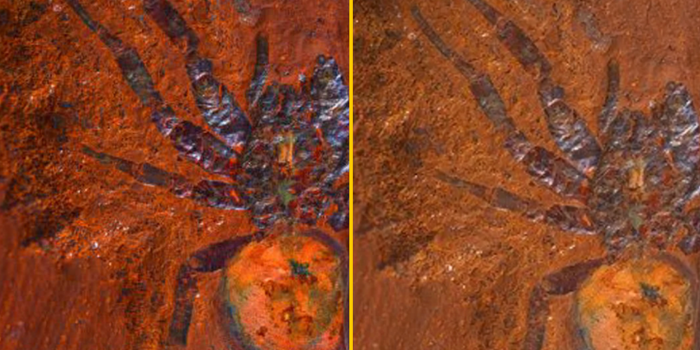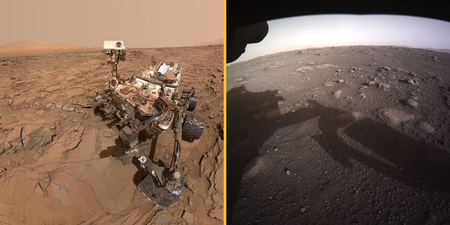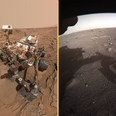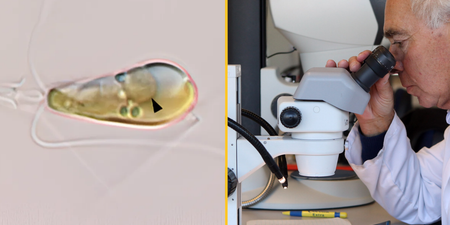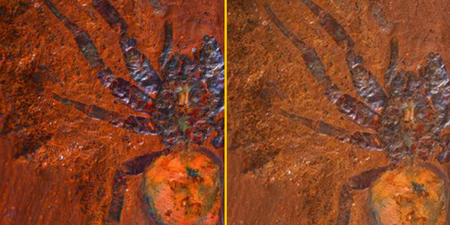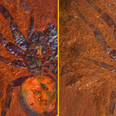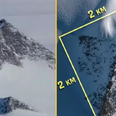It is the second-largest spider fossil ever found worldwide
Australia is the land of deadly things.
The continent is home to some of the deadliest creatures on Earth.
But if the you thought it’s spiders were the things of horror movies, wait until you see the prehistoric version.
Scientists have found a fossilised giant trapdoor spider in New South Wales, only the fourth specimen of its kind to be found in the country, and the first worldwide, of a spider belonging to the large brush-footed trapdoor spider family, Barychelidae.
The new species, which lived in the Miocene 11 to 16 million years ago, has been officially named Megamonodontium mccluskyi.
It seems, even million of years ago, Australia was a paradise for creepy crawlies.
Palaeontologist Matthew McCurry of the University of New South Wales and the Australian Museum said that because only four spider fossils had been found across Australia it is “difficult for scientists to understand their evolutionary history.”
“That is why this discovery is so significant, it reveals new information about the extinction of spiders and fills a gap in our understanding of the past,” he added.
McCurry said the closest living relative of the fossilised spider now lives in wet forests in Singapore through to Papua New Guinea, suggesting that “the group once occupied similar environments in mainland Australia but have subsequently gone extinct as Australia became more arid.”
The spider was discovered among a rich assemblage of Miocene fossils, which were found in a grassland region of NSW known as McGraths Flat.
So detailed was the preservation that the researchers could make out minute details in the body of the spider, confidently placing it close to the modern genus of Monodontium – but five times larger in size.
That’s not super huge, as Monodontium are usually quite small, but it’s still the second-largest spider fossil ever found, globally.
Megamonodontium mccluskyi’s body measures 23.31 millimeters, or just under an inch. With its legs spread, it would fit into the palm of your hand, MSN noted.
“Scanning electron microscopy allowed us to study minute details of the claws and setae on the spider’s pedipalps, legs and the main body,” explains virologist Michael Frese of the University of Canberra.
“Setae are hair-like structures that can have a range of functions. They can sense chemicals and vibrations, defend the spider against attackers and even make sounds.”
Arachnologist Robert Raven of Queensland Museum added: “Not only is it the largest fossilised spider to be found in Australia but it is the first fossil of the family Barychelidae that has been found worldwide.
“There are around 300 species of brush-footed trapdoor spiders alive today, but they don’t seem to become fossils very often. This could be because they spend so much time inside burrows and so aren’t in the right environment to be fossilized.”
The research has been published in the Zoological Journal of the Linnean Society.
Related links:
- Mum shares tip to help get rid of giant spiders invading UK homes
- Brit discovers huge spider in their home but refuses to let it be killed
- How to deal with sex-crazed spiders that will raid UK homes this month
- These male spiders catapult away to avoid being cannibalized after sex
